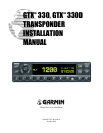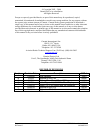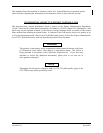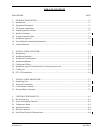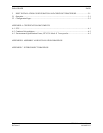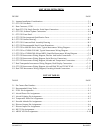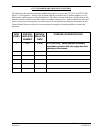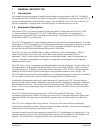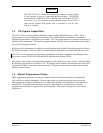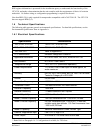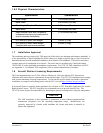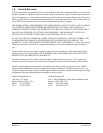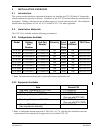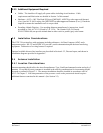
GTX 330 Installation Manual Page 1-1
190-00207-02 Revision G
1. GENERAL DESCRIPTION
1.1 Introduction
This manual presents the mechanical, and electrical installation requirements for the GTX 330 Mode S
Transponder and GTX 330D Diversity Mode S Transponder. Throughout this manual, the term GTX 330
applies to both transponders unless otherwise stated. After installation of the GTX 330, FAA Form 337
must be completed by an appropriately certificated agency to return the aircraft to service.
1.2 Equipment Description
The Garmin GTX 330 is a panel mounted Non-Diversity Mode S Transponder while the GTX 330D
is a Diversity Mode S Transponder. The GTX 330D employs two antennas, one intended to be
mounted on the top and the other on the bottom of the aircraft. The design meets RTCA/DO-181C
and EUROCAE ED-73A specifications.
The GTX 330 transponder is a radio transmitter and receiver that operates on radar frequencies, receiving
ground radar or TCAS interrogations at 1030 MHz and transmitting a coded response of pulses to ground-
based radar on a frequency of 1090 MHz. The GTX 330 is equipped with IDENT capability that
activates the Special Position Identification (SPI) pulse for 18 seconds.
The GTX 330 replies to ATCRBS Mode A, Mode C and Mode S All-Call interrogation. Mode A
replies consist of any one of 4,096 codes, which differ in the position and number of pulses
transmitted. Mode C replies include framing pulses and encoded altitude. Mode S interrogations are
selective. The Mode S transponders can respond to a single directed interrogation from the ground
station or another aircraft.
The GTX 330 is a Level 2 transponder, providing downlink of aircraft information. Ground stations can
interrogate Mode S Transponders individually using a 24-bit ICAO Mode S address, which is unique to
the particular aircraft. In addition, ground stations may interrogate a GTX 330 for its Transponder data
capability and the aircraft's Flight ID, which may be the registration number or other call sign. The
GTX 330 makes the maximum airspeed capability (set via configuration pages, see Section 5) available to
TCAS systems on-board nearby aircraft to aid in the determination of TCAS advisories.
In addition to displaying the code, reply symbol and mode of operation, the GTX 330 screen displays
pressure altitude, density altitude, temperature, and timer functions, depending on equipment connections
and configuration selection. The unit also features an altitude monitor, TIS traffic advisories and flight
timers. A voice or tone audio output announces altitude deviation, TIS traffic advisory and count down
timer expiration.
The GTX 330 features multiple transmit/receive ARINC 429 and RS-232 data ports. The unit
concentrates data from three ARINC 429 inputs, gray code, RS-232 input data and discrete inputs to the
high-speed ARINC 429 output bus used by display systems such as the Garmin 400 Series/500 Series
units.
The GTX 330 is configured with all key controls. The layout of the front panel keys and displays
segregates the transponder’s primary functions from the secondary functions. The unit can be configured
so the aircraft avionics master bus can turn the unit on.
Provision is made for unit software upgrade by means of RS-232 data through rear connector pins. If an
optional connector is placed in the aircraft, transponder removal and reinstallation for SW upgrade is not
required. The software can be changed while the unit is still mounted inside the aircraft.



